Ras Al Khaimah: Nakheel's Influence on Development
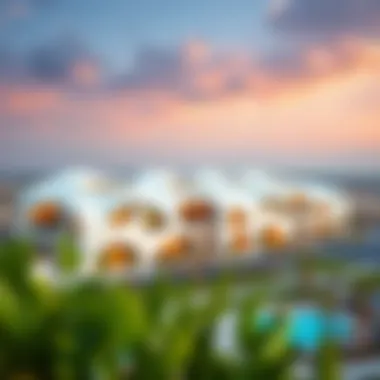
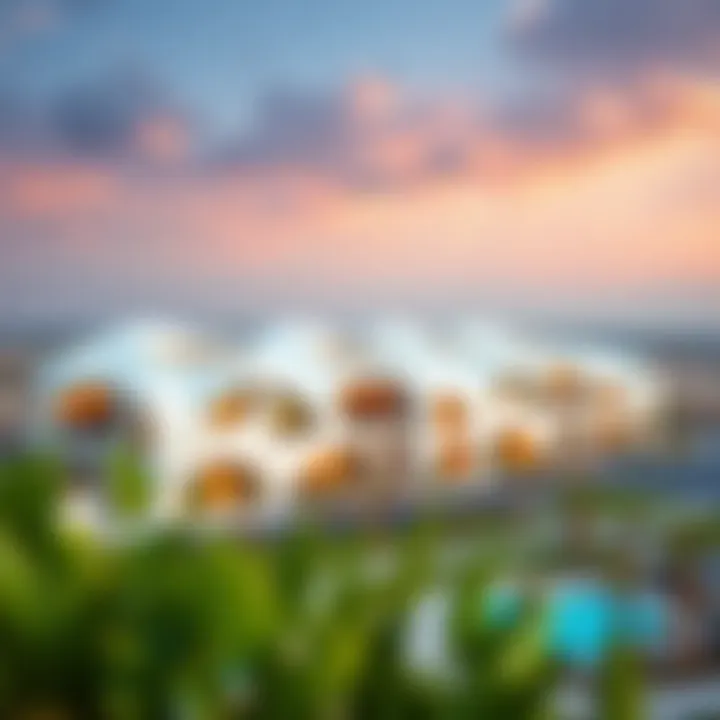
Intro
Ras Al Khaimah is a vibrant emirate, often overshadowed by its glitzy neighbors like Dubai and Abu Dhabi. Yet, within its borders lies a dynamic landscape continuously shaped by key players, notably Nakheel. Known primarily for its ambitious projects, Nakheel has been instrumental in the transformation of Ras Al Khaimah's urban fabric and its real estate market.
In this article, we will delve into the nuanced role Nakheel plays in steering the development of Ras Al Khaimah, scrutinizing various projects that not only redefine the skyline but also cater to the housing demands of residents and investors alike. Understanding Nakheel's vision, we can appreciate how it aligns with the broader growth ambitions of the emirate.
As we progress, we'll tackle pressing questions about market conditions, investment scopes, and the overall economic ramifications stemming from Nakheel's initiatives. By the end, you ought to have a clear grasp of not just the real estate dynamics but also the potential opportunities it holds for various stakeholders in the region.
Preamble to Ras Al Khaimah
Ras Al Khaimah (RAK) stands out as one of the seven emirates that form the United Arab Emirates, characterized by its unique blend of rich history, vibrant culture, and an increasingly dynamic economy. In the context of this article, introducing Ras Al Khaimah provides a foundational understanding of the environment in which Nakheel operates and the landscape within which it is shaping urban development.
The geographical location of RAK is noteworthy. Nestled between the Hajar Mountains and the Arabian Gulf, it boasts a diverse topography. This positioning offers not just spectacular views but also provides a range of opportunities for real estate development and tourism—two significant areas being shaped by Nakheel's initiatives in the emirate.
Geographical Context
Ras Al Khaimah covers a land area of approximately 1,684 square kilometers, making it the fourth largest emirate by area. The emirate's coastline stretches for roughly 64 kilometers along the Arabian Gulf, with pristine beaches and stunning landscapes that attract both local and international visitors. The Hajar Mountains rise to the south, offering a stark contrast to the flat coastal areas.
Essentially, the mix of mountains and sea allows for a variety of developments, catering to various lifestyles—from luxurious beachfront properties to serene mountain retreats. This geographical diversity is pivotal for Nakheel as it designs projects that capitalize on the natural beauty of the region while promoting sustainable living.
Economic Overview
Economically, Ras Al Khaimah is a blend of traditional industries and modern developments. While the emirate has long relied on agriculture, fishing, and trade, it has made significant strides towards diversification in recent years. Manufacturing and tourism have emerged as key sectors of growth, thanks to strategic investments and the introduction of new projects.
The emirate's GDP continues to show potential growth, supported by initiatives aimed at attracting foreign investment and fostering a business-friendly environment. Furthermore, Nakheel plays a vital role in this economic narrative, seeing its projects as both catalysts for development and contributions to the wider economic framework of RAK.
Cultural Significance
The cultural fabric of Ras Al Khaimah is woven from its rich heritage, with influences from Bedouin traditions, a history of pearl diving, and a 7,000-year-old archaeological narrative. This cultural significance is evident in many of the developments Nakheel undertakes. By incorporating local art and architecture, Nakheel not only honors the past but also enhances the emirate's identity.
RAK is home to numerous museums, forts, and heritage sites, which Nakheel aims to integrate within its projects. This approach provides a sense of place and meaning to developments, ensuring that they resonate with both residents and visitors alike. The cultural significance of the emirate adds value to real estate, making properties more attractive to potential buyers and investors, who are drawn to locales rich in history and tradition.
"The gateway to myriad possibilities, Ras Al Khaimah is a canvas where modernity meets tradition, making it a hotbed for real estate innovation."
In sum, the introduction to Ras Al Khaimah not only sets the stage for understanding Nakheel's influence but also highlights the strategic advantages and cultural richness that make the emirate a prime location for development. As we proceed to explore the emergence of Nakheel, understanding this context will provide a clearer picture of how the company is transforming Ras Al Khaimah.
The Emergence of Nakheel
The growth trajectory of Ras Al Khaimah (RAK) as a prominent emirate within the UAE is significantly intertwined with Nakheel's ambitious developments. Understanding the emergence of Nakheel is crucial for comprehending how it has contributed to reshaping the emirate's urban and economic landscape.
Founding and Vision
Nakheel was founded in 2000, operationally emerging from the broader vision of the UAE to diversify and enhance its economic base. Its inception was driven by the need for comprehensive urban development that could support a rapidly growing population and attract foreign investment. The vision revolved around creating world-class communities that deliver both residential comfort and commercial viability. Nakheel embodies the blend of luxurious lifestyle options with practical infrastructure development.
The company has consistently aimed to offer unique projects that resonate with both locals and expatriates alike. This strategy not only aims to fulfill the housing demands of RAK but also to position it as a hub for tourism and trade. For instance, Nakheel’s offering of beautiful waterfront properties shows a deep commitment to enhancing RAK’s natural landscape, attracting those looking for serene living spaces amidst modern amenities.
“Nakheel is not just about buildings; it’s about building communities,” emphasizes a spokesperson.
Initial Projects
The early projects launched by Nakheel played a pivotal role in establishing its reputation in RAK and beyond. One of its flagship developments was the Al Hamra Village, a mixed-use community that features residential units alongside commercial space. This project became a prototype for future developments similar to its creative approach to integrating different lifestyle elements.
- Al Hamra Mall became an essential shopping destination, reflecting Nakheel's understanding of consumer needs and local culture.
- The luxurious Waldorf Astoria Ras Al Khaimah, developed by Nakheel, further anchored the emirate's status as a top-tier tourist destination, showcasing upscale hospitality in a stunning setting.
The influence of these initial ventures has rippled through RAK’s economy, offering jobs and fostering a robust business environment that attracts various enterprises. Nakheel’s foresight and commitment to quality have enabled it to not just develop properties, but to also contribute significantly to RAK’s overall growth narrative.
Major Projects in Ras Al Khaimah
Ras Al Khaimah's transformation into a thriving urban hub is inexorably linked to Nakheel's ambitious projects. These developments are not mere brick-and-mortar constructions but are vital cogs in the emirate's broader strategy for economic development and urban planning. The projects initiated by Nakheel have redefined not only the physical landscape of Ras Al Khaimah but also enriched the socio-economic fabric of the region. This section will delve deep into two significant strands: residential developments and commercial ventures, alongside the tourism infrastructure, which collectively breathe life into Nakheel’s vision for a modern emirate.
Residential Developments
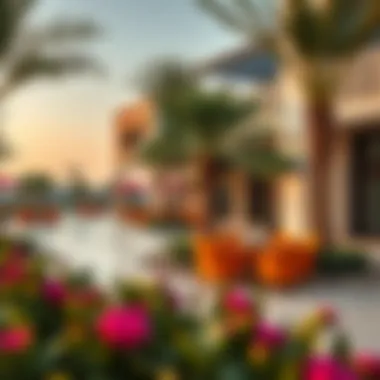
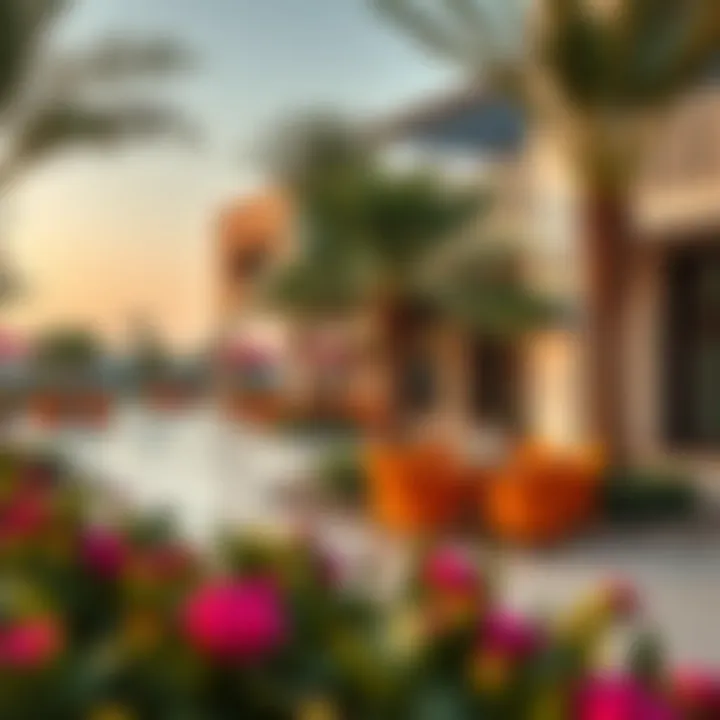
Housing projects spearheaded by Nakheel have garnered much attention for various reasons. Not just factories of apartments and houses, they embody lifestyle enhancements for residents. These developments encompass a diversity of residential types ranging from luxurious villas at Al Hamra Village to affordable housing projects like the Al Ghadeer community. The idea of building communities rather than just residences resonates with a broad spectrum of potential occupants.
Types of Residential Projects
The first thing that stands out in the topic of residential projects is the variety available. Nakheel has made sure to cater to different demographic needs.
- Villa communities for families seeking space and comfort.
- Apartment complexes bringing access to urban amenities.
- Mixed-use developments that blend living with leisure and workspaces.
Each type has been designed around a central premise: improving quality of life. The uniqueness of Nakheel's residential projects lies in their integration with landscapes and community amenities, welle quipping them not just as places to live but as places to belong.
Target Market Analysis
The target market for these residential offerings reflects a keen understanding of demographics and buyer psychology. The emphasis lies heavily on attracting diverse groups, from young professionals to families looking for a long-term community.
- High-end villa buyers benefit from exclusivity and luxury features.
- Middle-income families find affordable options with community perks.
- Expatriates are drawn to the attractive rental packages.
Unique to Ras Al Khaimah is the competitive pricing compared to neighboring emirates, which makes these offerings appealing without compromising quality. The real estate market here is flourishing, attracting international attention yet keeping local priorities at the forefront.
Design and Architecture Trends
In an era where ecological mindfulness is paramount, Nakheel’s design features resonate with the current architectural trends emphasizing sustainability and integration with nature. Distinctive elements such as solar panel installations, energy-efficient homes, and open green spaces are prevalent.
- Styles range from contemporary minimalist to traditional Arabian aesthetics, blending culture with modern living.
- Smart home technology is increasingly becoming the norm in new developments.
This alignment with global trends adds a layer of attractiveness for potential buyers looking for modernity infused with cultural depth.
Commercial Ventures
The commercial landscape within Ras Al Khaimah also stands to benefit from Nakheel's initiatives. The drive towards establishing dynamic business districts is seen as a catalyst for both local enterprises and foreign investors, enhancing the emirate’s appeal as a business destination.
Business District Initiatives
The establishment of dedicated business districts is paramount in generating a cohesive environment where businesses can thrive. Nakheel’s vision includes:
- Fully integrated spaces that combine office, retail, and leisure, enabling synergy between different sectors.
- Strategic locations that provide accessibility and visibility.
This thoughtful approach not only attracts established companies but also nurtures startups and SMEs, fostering a vibrant economic climate.
Investment Opportunities
The portfolio of commercial ventures doesn't just create infrastructure; it opens doors—literally and metaphorically—for investors.
- Nakheel offers attractive investment incentives, making it beneficial for stakeholders.
- Areas designed for mixed-use open avenues for increased foot traffic and customer engagement.
With such strategic planning, investors see potential for high returns, further fueling the emirate's economic engine.
Impact on Local Economy
The ripple effects of Nakheel's developments can be felt throughout the local economy.
- Job creation is profound, with thousands employed directly and indirectly through construction and ongoing business operations.
- Local businesses thrive in synergy with larger corporate bodies, creating a robust retail environment.
The economic landscape is evolving, making Ras Al Khaimah a formidable player among its peers.
Tourism Infrastructure
Tourism serves as another powerful arm supporting Ras Al Khaimah's economic ambitions. Nakheel's influence extends into luxury resorts and hospitality, which cater to both international tourists and residents alike.
Resorts and Hospitality
The emphasis on upscale resorts brings a wealth of advantages:
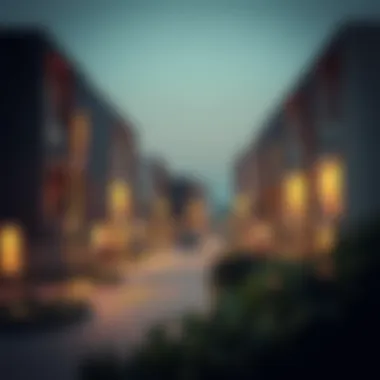

- Creation of luxurious stays that brush shoulders with natural beauty, enhancing visitor experiences.
- Facilities developed with cultural insights, ensuring visitors experience the essence of Emirati hospitality.
Such features position Nakheel's hospitality projects as leaders in raising the bar for tourist experiences in the region.
Integration with Local Culture
Cultural integration is another essential aspect that enhances the tourist experience. Nakheel ensures its hospitality projects:
- Incorporate elements of local traditions and aesthetics.
- Play a role in promoting community events that attract visitors.
This thoughtful approach provides tourists with a more enriching experience, showcasing the emirate’s heritage while keeping modern comforts in mind.
Sustainability Efforts in Tourism
Tourism infrastructure is increasingly under scrutiny regarding its environmental impact. Nakheel’s initiatives reflect a commitment to sustainability, incorporating:
- Eco-friendly building practices that minimize carbon footprints.
- Efforts to engage visitors in environmental activities such as wildlife tours and conservation projects.
Such endeavors not only attract eco-conscious travelers but also align with the global shift towards sustainable tourism.
In summary, the collaborative projects of Nakheel are far more than physical structures; they form an intricate web of community, business, and nature, while positioning Ras Al Khaimah as a forward-thinking, inclusive destination.
Impact on Local Economy
The local economy of Ras Al Khaimah has witnessed a noticeable transformation since the arrival of Nakheel. This real estate powerhouse has played a pivotal role in not just reshaping the skyline of the emirate but also in bolstering its economic framework. The infusion of investments into diverse projects has created a ripple effect, affecting various sectors and enhancing the livelihoods of both residents and stakeholders.
Job Creation
When it comes to employment, Nakheel has been a fundamental player. The construction of residential and commercial developments demands a large workforce, which has led to direct job opportunities for thousands of individuals. It's not merely about the jobs being created at the sites; there’s also an increase in jobs in supporting industries. Local suppliers and service providers have seen an uptick in business as they cater to the burgeoning needs of these projects.
For instance, the boom in construction jobs often results in ancillary roles in logistics, architecture, and various trades. It's estimated that for every job created in construction, there are multiple indirect jobs generated in sectors such as retail, hospitality, and healthcare. The multiplier effect distinctly demonstrates how Nakheel's activities drive economic vitality across Ras Al Khaimah.
Support for SMEs
Small and medium enterprises are often touted as the backbone of any economy, and Ras Al Khaimah is no different. Nakheel's initiatives have provided a fertile ground for SMEs to flourish. Whether it's through establishing dedicated commercial hubs or supporting local entrepreneurs in their ventures, Nakheel has fostered an ecosystem that encourages innovation and growth.
Furthermore, as new developments come to life, there’s an increasing demand for goods and services that local SMEs are well-positioned to fulfill. This reliance not only amplifies the reach of smaller businesses but also stabilizes the local economy. Collaboration between Nakheel and small businesses enhances the overall business climate, making it more resilient to external shocks.
Attracting Foreign Investment
Attracting foreign capital is essential for the success of any developmental strategy. Nakheel has become synonymous with Ras Al Khaimah's appeal to international investors. By developing high-end properties and modern infrastructures, they’ve caught the eye of overseas investors looking for lucrative opportunities. Properties developed by Nakheel often feature state-of-the-art design and advanced amenities, making them highly desirable.
The influx of foreign investments does not only contribute to the financial robustness of the region but also aids in enhancing the skill sets of the local workforce through knowledge transfer. As international companies set up shop in Ras Al Khaimah, local professionals gain invaluable experience and exposure. This integration is critical for sustainable economic growth as it elevates the capability of the labor pool, ensuring long-term prosperity.
"The economic contributions of Nakheel to Ras Al Khaimah extend beyond mere financial statistics; they are shaping a sustainable and diverse economic fabric."
As Nakheel continues to pave the way for development, the interconnectedness of job creation, support for SMEs, and the attraction of foreign investment illustrates the broader impact on Ras Al Khaimah’s local economy, marking it as a significant player on the global stage.
Sustainability Initiatives
Sustainability initiatives in Ras Al Khaimah are not just about checking boxes; they represent a profound shift in how urban development collides with environmental stewardship. As Nakheel spearheads various projects in the region, a keen focus on sustainable models emerges, highlighting not only the necessity of growth but the responsibility towards the environment as well. The initiatives signify a commitment to current and future generations in adapting to climate change while enhancing the resilience of local communities.
Environmental Considerations
Engaging with the environmental aspects of Ras Al Khaimah, Nakheel implements measures that align with global sustainability standards. Projects are increasingly designed to minimize ecological footprints while maximizing biodiversity. For instance, incorporating green architecture— using energy-efficient materials and renewable energy sources— is gaining traction. Notably, the introduction of solar panel installations across several developments has marked a notable step towards lower carbon emissions.
The emirate's unique ecosystems aren't sidelined either; initiatives also include restoring natural habitats and preserving local flora and fauna. Nakheel’s development projects thoughtfully incorporate landscaped gardens and green belts that act as lungs for urban spaces.
"The balance between urban growth and environmental preservation is not just an option; it's a responsibility that drives our planning methodologies." - A statement from Nakheel’s sustainability manager.
These steps do not just tackle immediate environmental concerns. They lay down a foundation for sustainable tourism, echoing throughout Ras Al Khaimah’s broader economic landscape. Visitors and residents alike can experience the emirate’s natural beauty without compromising it.
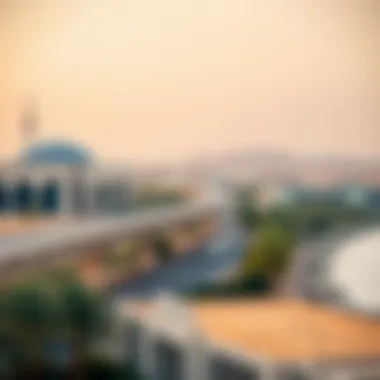
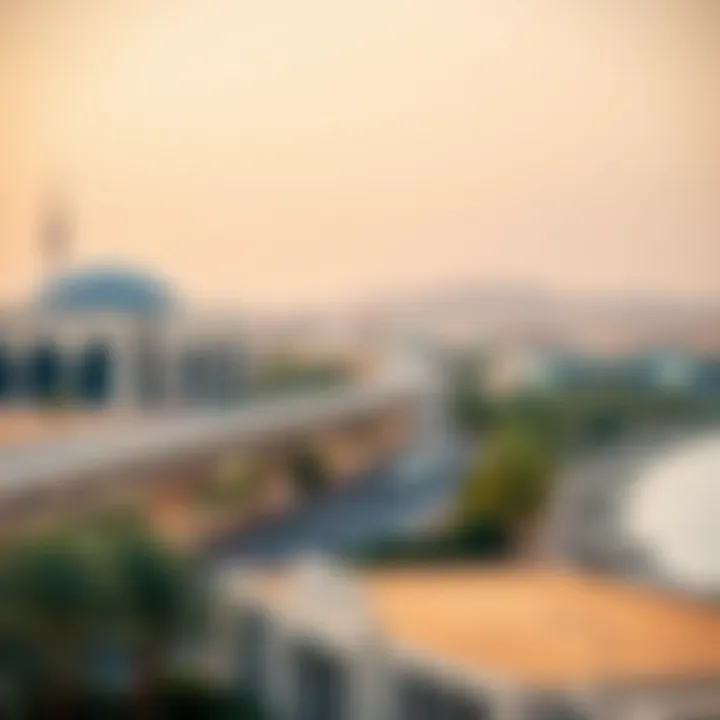
Community Engagement
Community engagement is crucial for the success of sustainability initiatives in Ras Al Khaimah. Nakheel actively seeks the voices of the locals, ensuring their perspectives shape the developmental narrative. Programs designed to educate the community about conservation practices foster local stewardship and enthusiasm for sustainable living.
Engagement manifests in various forms: workshops, volunteer opportunities, and partnerships with local schools to encourage a culture of environmental awareness. For example, beach clean-up campaigns have become a common endeavor, galvanizing community spirits and sparking conversations around waste management and ecology.
Furthermore, Nakheel's support for small businesses that align with sustainable practices strengthens the local economy while promoting responsible consumption. The relationship between Nakheel and its community is symbiotic. When residents feel a part of the development process, the initiatives not only gain acceptance but flourish, fostering a robust community-centered ethos.
Challenges Faced by Nakheel
When assessing Nakheel's influence and the overall development within Ras Al Khaimah, it's impossible to ignore the hurdles that the real estate giant has encountered. Understanding these challenges not only sheds light on Nakheel's operations but also reflects the broader economic conditions and policy environment of the Emirate. From market instability to regulatory red tape, these hurdles shape the company's strategies and initiatives.
Economic Fluctuations
The real estate sector is notoriously sensitive to economic swings. For Nakheel, fluctuations in the local and global economy present significant challenges. The downturns can lead to decreased demand for properties, impacting sales and subsequently, revenues. For instance, during economic slumps, potential buyers might hesitate, prioritizing savings over investments. This hesitance often results in a stalled property market, where even well-planned projects can face delays or alterations to their scope.
Moreover, Nakheel has had to grapple with changing consumer preferences. For example, as market needs evolve, Nakheel must adapt its developments accordingly. Emerging trends often require swift shifts in design, location targeting, and even pricing strategies. The benefit of understanding economic fluctuations lies in the ability to forecast and plan ahead, mitigating potential risks. However, misreading these market signals can lead to misguided investments.
Regulatory Hurdles
Navigating the regulatory landscape is another challenge that Nakheel consistently encounters. The regulatory framework in Ras Al Khaimah can be both complex and multifaceted. Changes in laws or policy shifts can introduce unforeseen complications for ongoing and future projects. For example, let's say Nakheel plans to launch a new residential development. If new zoning laws are enacted mid-planning phase, the project could face delays or require redesigns to comply with the updated regulations.
Furthermore, securing all the necessary permits and approvals can be a daunting task. This is particularly true if the regulations are not consistently applied or if there is a lack of clarity in the requirements. Inconsistent regulatory enforcement can create environments of uncertainty, thus affecting investor confidence.
In light of these challenges, Nakheel has developed strategic frameworks intended to address both economic and regulatory hurdles. By increasing collaboration with local authorities and engaging in predictive market analytics, they aim to mitigate the impacts of economic shifts while ensuring compliance with regulations. For prospective investors and stakeholders, understanding these challenges is crucial. It highlights not only the risks associated with real estate investments in Ras Al Khaimah but also Nakheel’s resilience in navigating these complicated waters.
"In a landscape marked by both opportunity and adversity, the ability to adapt is what separates successful developments from the rest."
Future Prospects
The concept of future prospects serves as a critical framework for understanding how Nakheel's influence will continue shaping Ras Al Khaimah in years to come. This section not only examines anticipated projects and developments but also delves into the market trends that can affect investors and residents alike. Addressing future prospects helps clarify the ongoing commitment of Nakheel to drive growth and innovation in the emirate’s urban landscape.
Planned Developments
Moving forward, Nakheel has laid out a roadmap that includes several ambitious projects aimed at enhancing both residential and commercial spaces. These developments can have a profound impact on the community, contributing to a vibrant urban environment. The following elements highlight key aspects of the planned developments:
- Residential Communities: New housing projects are designed to accommodate a diverse range of residents, from young families to retirees. This multifunctional approach ensures that the community grows cohesively.
- Commercial Complexes: Plans for state-of-the-art shopping centers and office spaces are on the horizon. Such infrastructures not only create job opportunities but also attract businesses, fueling economic vitality.
- Sustainable Features: Growing awareness of environmental issues has led to an emphasis on sustainable designs. Developments will integrate eco-friendly technologies, like solar panels and green spaces, that can make urban living more pleasant.
By focusing on these multifaceted developments, Nakheel aims to cultivate a dynamic community that resonates with its diverse inhabitants while appealing to potential investors.
Market Predictions
Looking down the road, market predictions for Ras Al Khaimah are optimistic. Several factors contribute to this forward-looking perspective:
- Economic Stability: As the region broadens its economic base, including sectors like tourism and innovation, stability is expected to attract further private investment.
- Rising Demand for Housing: The anticipated influx of new residents, drawn by the promise of Nakheel’s developments, will likely lead to increased demand for housing.
- Investors' Confidence: The projects led by Nakheel can enhance investor confidence in the real estate market. Trends show that established entities can be a bedrock for sustained investment opportunities.
"The groundwork laid by Nakheel sets a solid foundation, ensuring that every development is aimed at not just meeting today’s needs but also preparing for tomorrow's challenges."
In summary, the future prospects of Ras Al Khaimah under Nakheel’s guidance hint at a landscape imbued with opportunity. As developments progress and market dynamics evolve, both residents and investors can look forward to a thriving, multifaceted environment in the emirate.
Closure
As we draw this exploration to a close, it’s essential to underscore the multifaceted role Nakheel plays in the ongoing evolution of Ras Al Khaimah. The essence of this discussion illustrates not just a real estate entity's contribution but a profound shift in the emirate’s socioeconomic landscape. Nakheel’s targeted projects foster an environment where sustainability and modernity harmoniously coexist, shaping the future of residential and commercial sectors alike. The benefits that stem from these initiatives leave lasting impressions on the local community and investors alike.
Summary of Key Insights
The deep dive into Nakheel’s operations reveals several key insights that resonate throughout the emirate. First, the sheer scale of Nakheel's projects indicates a commitment to building a robust and diversified economy. The focus on developing residential neighborhoods, booming commercial districts, and vibrant tourism hotspots presents a model for other regions aiming for similar growth. Additionally, Nakheel’s ventures are not just about physical infrastructure—they embody a vision for community engagement and cultural integration that helps retain the unique identity of Ras Al Khaimah.
Key points include:
- Strategic Project Diversification: Nakheel is not solely confined to one type of development, thus appealing to a broader market.
- Local Community Benefits: Moving beyond job creation, there’s an emphasis on sustainable practices that cater to the societal needs of residents.
- Investment Confidence: Foreign investments find a fertile ground here, thanks to Nakheel’s well-considered approach, which reassures investors of potential substantial returns.
Final Thoughts on Nakheel’s Role
"The future belongs to those who believe in the beauty of their dreams." - Eleanor Roosevelt
The insights gathered here articulate not just the growth potential but a shared vision for the future that Nakheel embodies. For investors, buyers, and professionals, understanding this correlation between a developer’s foresight and the emirate’s trajectory offers invaluable guidance in navigating the ever-evolving market landscape.



